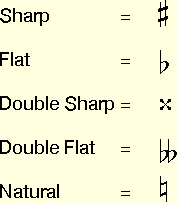SonnyBlack
Versatile
As far as key signatures go for a measure, say your signature is an A Major, and you have scored your G on both of the lines for the G ( this is on a Treble staff) would all of the corresponding notes of G, unless notated, become a G#? Or would only the ones that fell on the G that is in the key signature?
I am really trying to understand music fully, beyond just putting sound on sound to make it sound good. If I worded the question horribly I apologize in advanced.
- Sonny Black
I am really trying to understand music fully, beyond just putting sound on sound to make it sound good. If I worded the question horribly I apologize in advanced.
- Sonny Black

